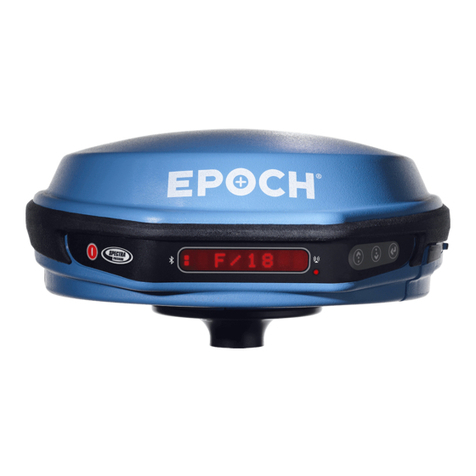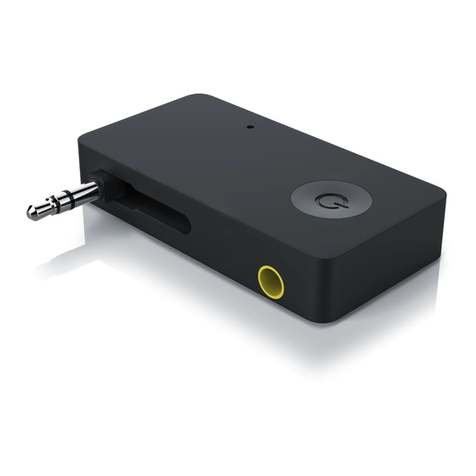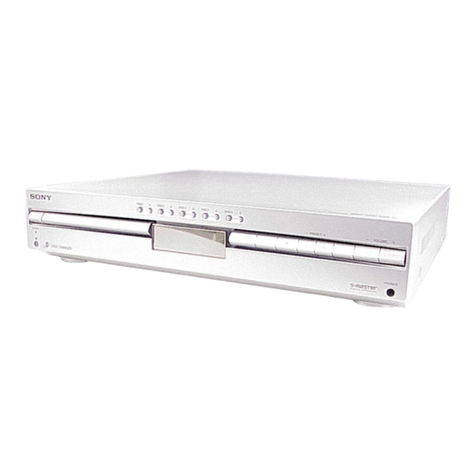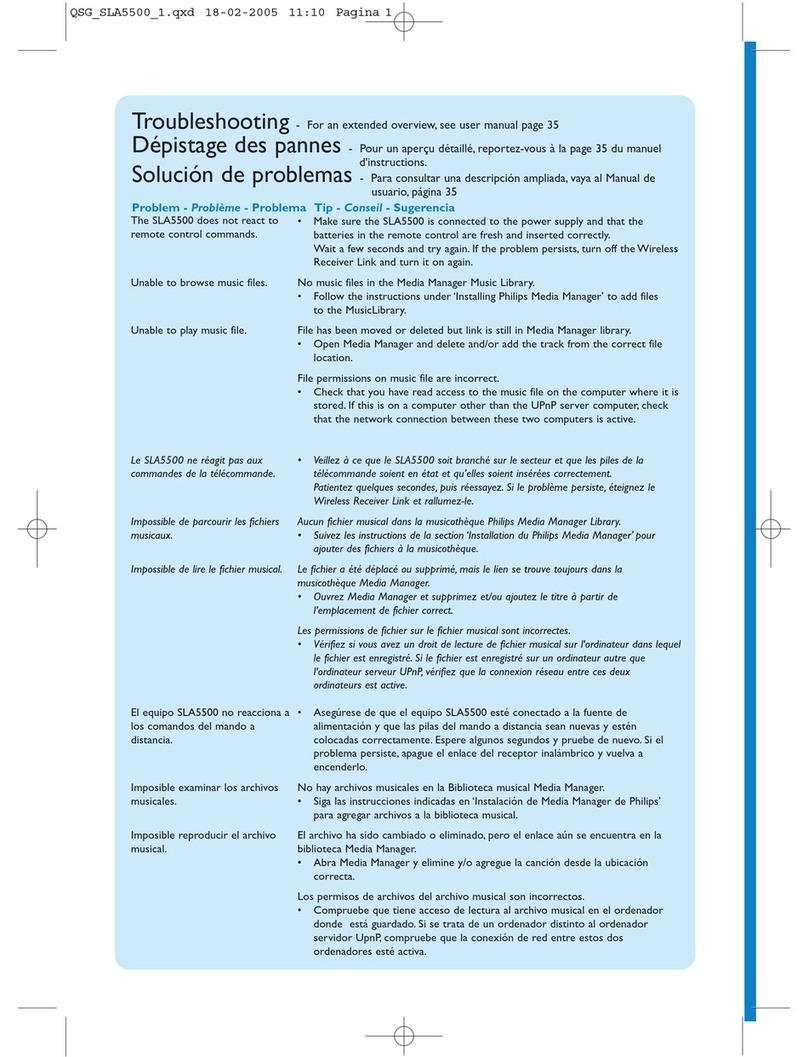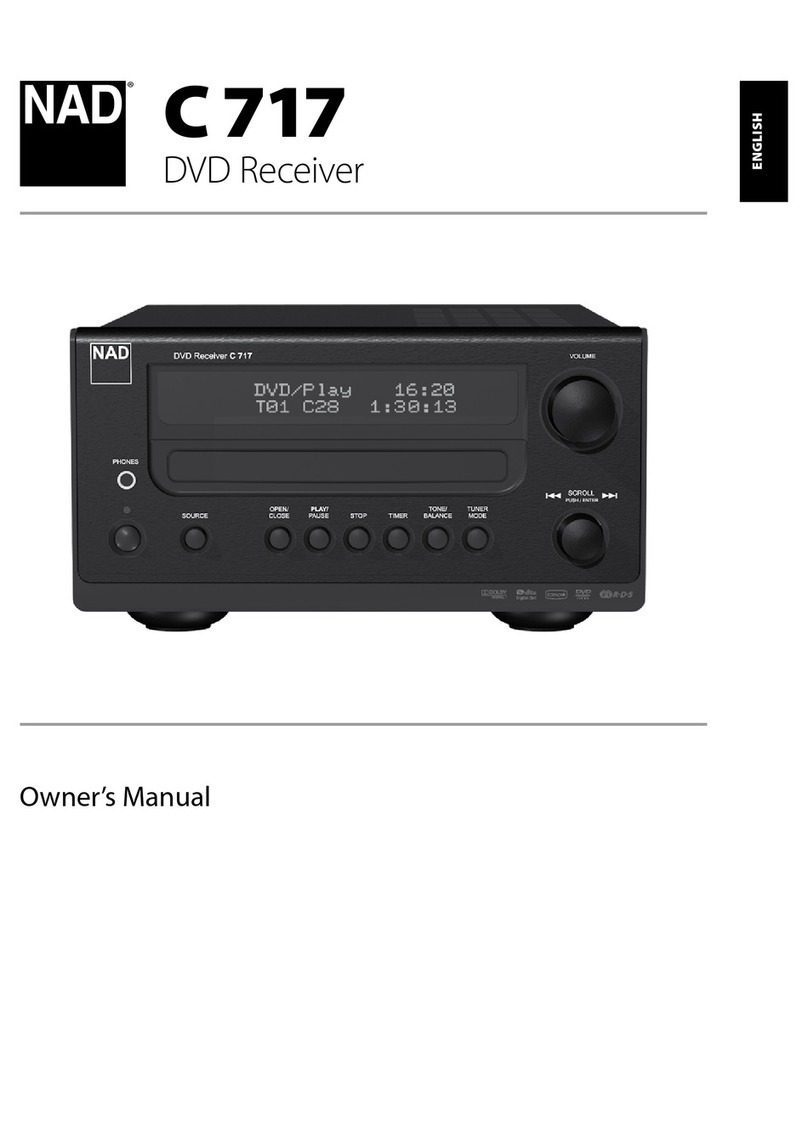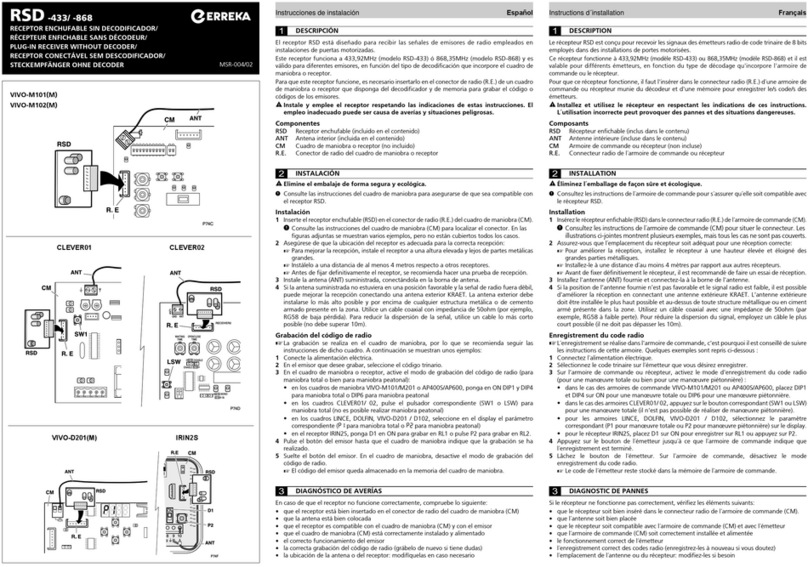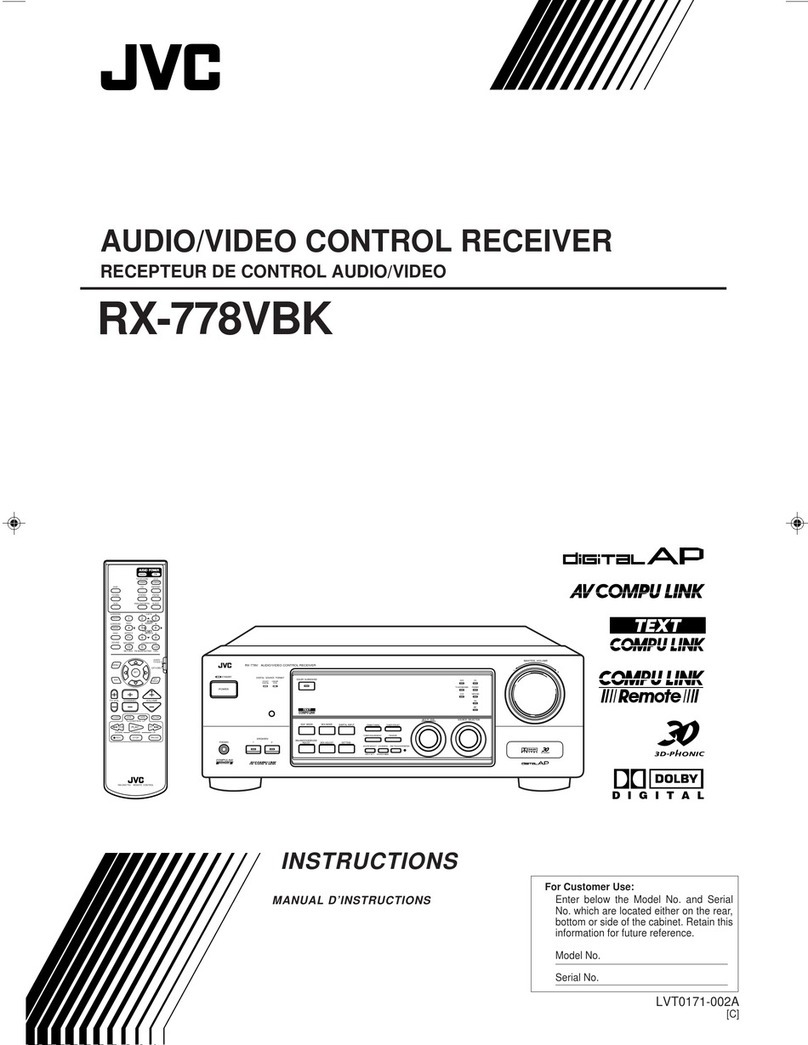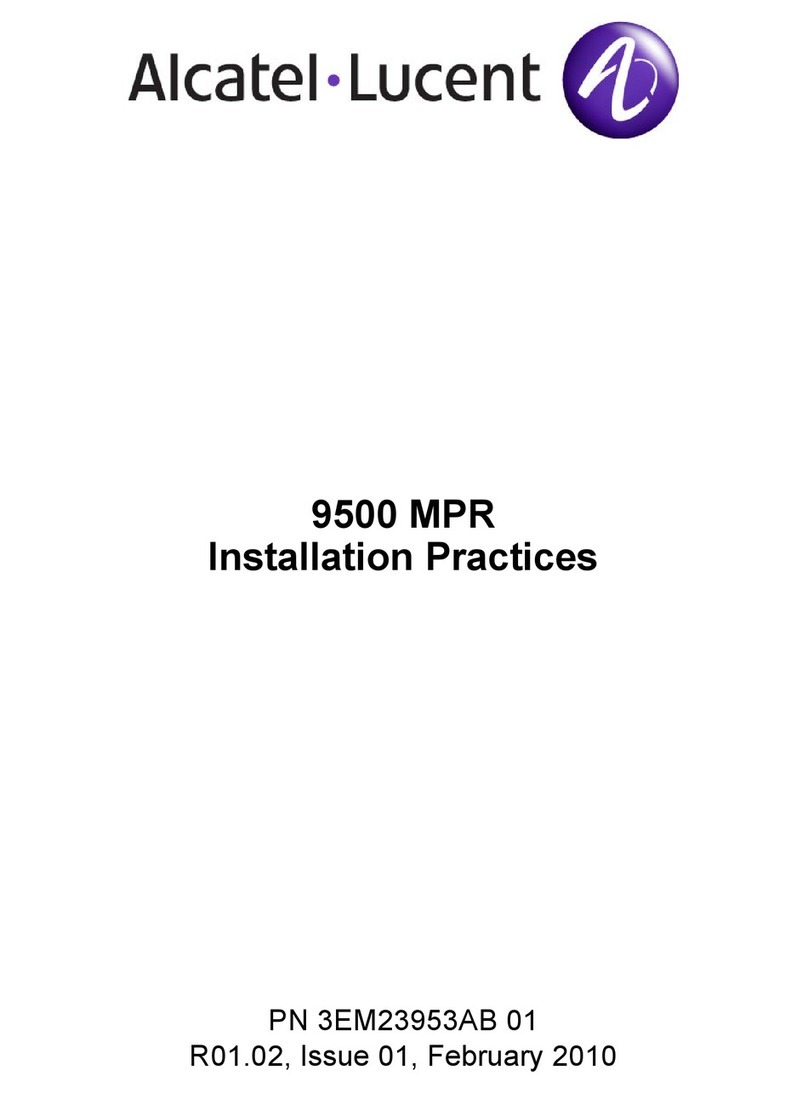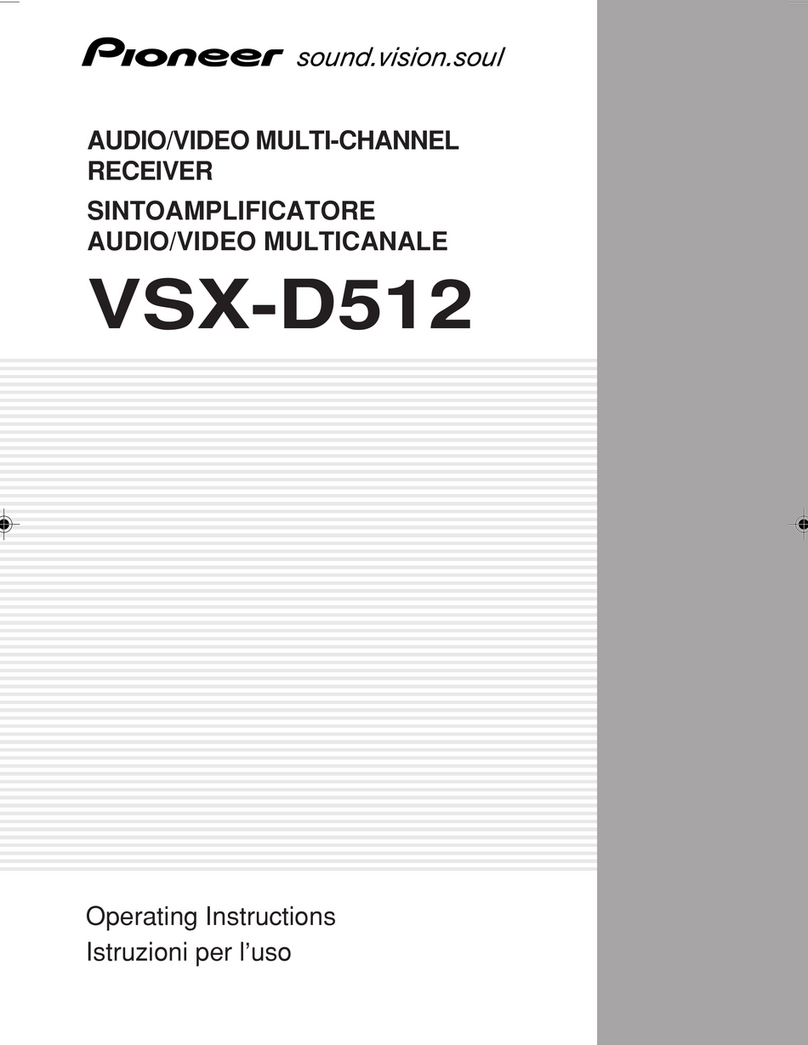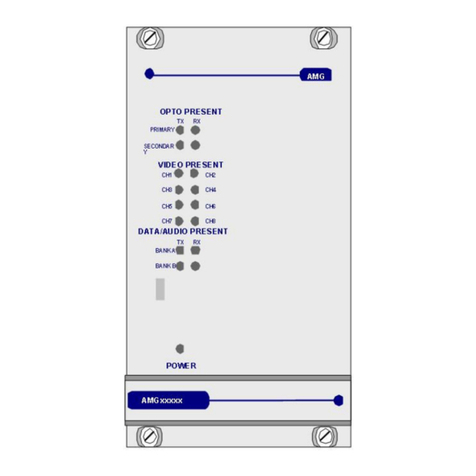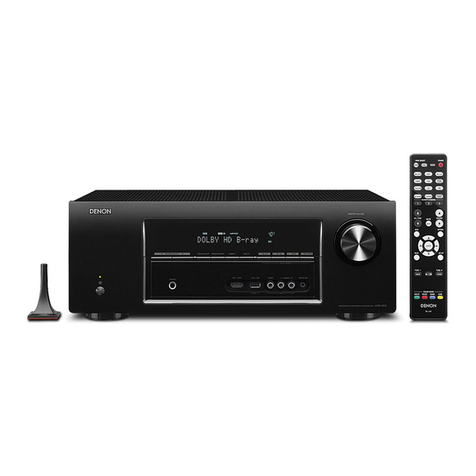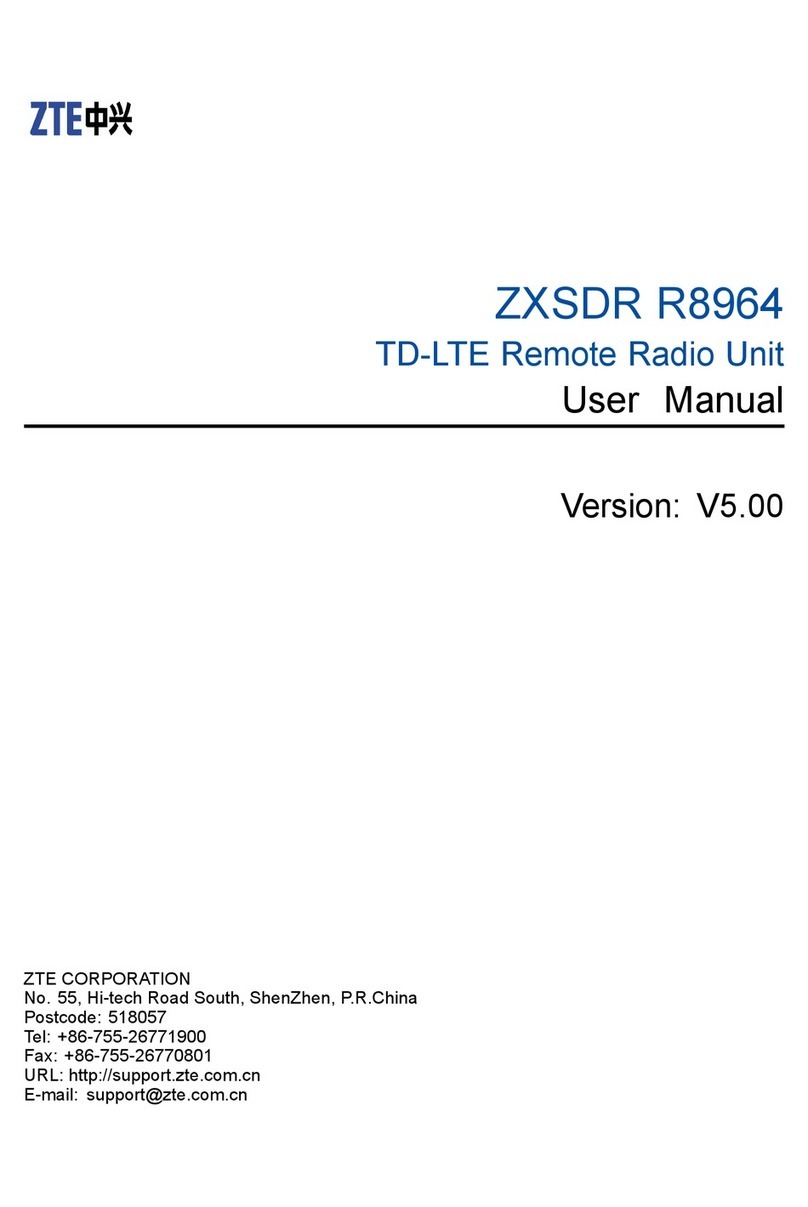Spectra Precision LR30 User manual

– 2 –
– 5 –
– 3 – – 4 –
– 6 – – 7 – – 8 –
LR30 & LR30W
Laser Receiver
User Guide
•
Introduction
Thank you for choosing the Spectra Precision®Laser Receiver LR30. The laser receiver
is a rugged, multi-purpose, easy-to-use electronic sensor that detects laser light
generated by rotating laser transmitters. The receiver works with nearly all models of
rotating lasers and detects both visible and invisible beams.
Before using the receiver, be sure to read this user guide carefully. Included in it is
information about setting up, using, and maintaining the receiver. Also included
in this manual are WARNINGS!, CAUTIONS, and Notes. Each of these words
represents a level of danger or concern. A WARNING! indicates a hazard or unsafe
practice that could result in serious injury or death. A CAUTION indicates a hazard or
unsafe practice that could result in minor injury or property damage. A Note indicates
important information unrelated to safety.
Your comments and suggestions are welcome; please contact us at:
Trimble - Spectra Precision Division
5475 Kellenburger Road
Dayton, Ohio 45424-1099 U.S.A.
Phone: (937) 245-5600 / (800) 538-7800
Fax: (937) 233-9004
Internet: www.trimble.com
Safety
Please follow all operating and safety instructions in this guide and that of your
machinery. Perform periodic checks of the product’s performance. Trimble or its
representatives assume no responsibility for results of the use of this product including
any direct, indirect, consequential damage, and loss of profits. Check your work
frequently.
WARNING: When working near construction or agricultural machinery, follow
all safety precautions as described in the machinery’s user guide.
WARNING: When excavating, follow all excavation and trench safety regulations
and practices.
WARNING: Be aware of all overhead obstructions and electrical power lines.
The receiver and mast may be higher than the machinery. Remove when transporting
machinery.
CAUTION: Do not disassemble any part of the receiver other than to replace
batteries. The receiver is to be serviced by authorized Trimble service personnel only.
Maintenance and Care
Your receiver was shipped in a protective carrying case. If the receiver is transported
from job to job inside its protective case and normal instrument precautions are
followed, the receiver will provide many years of service. When storing the receiver,
be sure to store it in its carrying case.
Do not wipe dust or dirt off the receiver with a dry cloth as scratching could occur,
possibly damaging these surfaces. Use only a good quality glass cleaner with a soft
cloth on all external components. If these surfaces have hardened concrete or other
materials on them, take the system to your Authorized Service Center for cleaning.
If the receiver will not be used for more than 30 days, remove the alkaline batteries
from it. Be sure to dispose of all batteries properly. Refer to your state or local
requirements for the disposal information.
Using the Receiver
Operation
Deadband (Accuracy) Button
The deadband, or on-grade accuracy, has three options: fine, standard, and wide. This
selection can be changed to meet various job conditions. To show the current selection,
press the button once; the status LED lights. To change the current selection, press the
button again. The deadband and corresponding LED change with each press.
Features and Functions
1. Aluminum-Cast Upper and Lower Housings—
protect the receiver.
2. Polycarbonate Housing—protects the
electronics.
3. Receiving Windows—include photocells for
laser beam reception.
4. Super-Bright LEDs—are highly visible and
graphically display grade position. The green
LEDs display on-grade information, and the
red LEDs display high and low information.
5. Touch-Panel—contains power, deadband,
and display-brightness buttons. The panel also
displays low-battery warning and deadband
selection. Unmarked buttons and button
combinations provide additional functions. For
more information, see the “Operation” section
of this guide.
6. Mounting Knobs—are attached to stainless
steel clamps. The large front-facing knobs allow
for quick and easy installation to a round pipe, square tubing, or magnetic mount.
7. Access Screws—allow easy access to battery compartment so the batteries can be
replaced.
8. Accessory Connector—accepts the cable to the optional remote display, machine
power cable, or automatic control box. The connector also accepts Ni-MH battery
charger. A dust cap covers the connector to help keep it clean.
Installing and Recharging the Batteries
Alkaline Batteries
1. Hold the receiver so the accessory connector is pointing up.
2. Remove the dust cap from the accessory connector.
3. Loosen the two thumb screws and remove the battery-access cover.
4. Install four “C” cell alkaline batteries as shown on the label diagram inside the
battery compartment noting the (+) and (–) terminals.
5. Replace the battery-access cover. Firmly tighten the two thumbscrews.
6. Replace the accessory-connector dust cap.
Nickel Metal Hydride Batteries (Ni-MH)
Rechargeable batteries require an initial and subsequent charging time of
approximately 3 hours. Two or three charging cycles may be required to obtain
maximum battery life. To charge:
1. Remove the dust cap from the accessory connector.
2. Insert the cannon adapter into the receiver
accessory connector aligning the slot and
connector key. Insert the charger female barrel
into the cannon adapter.
3. Make sure the proper AC prongs are on the charger.
Note: To change the prong adapter, press the tab release in the direction indicated
by the arrow and remove the existing prong. Insert the proper adapter and release
the tab.
4. Plug the charger into an appropriate outlet. The receiver will not operate when it
is charging.
Note: The charge-status indicator located on the back of the housing remains
solid when the batteries are charging. The left LED flashes when the batteries are
fully charged.
5. When the batteries are charged, unplug the charger from the outlet, and remove
the cannon adapter from the accessory connector. Replace the dust cap.
Battery Safety
Built-in overcharging protection prevents damage to the receiver if it is left on charge
after being fully charged. Charge protection also prevents damage if you accidentally
try to recharge alkaline batteries.
CAUTION: Do not attempt to charge alkaline or other disposable batteries.
Note: The batteries should only be charged when the receiver is between 0 °C to
45 °C (32 °F to 113 °F).
The rechargeable battery electronics include charge status and charge-error indicators
located on the back of the housing.
Charge Status Indicator: The LED remains solid when the batteries are charging.
The LED flashes when the batteries are fully charged. When the batteries are charged,
unplug the charger from the outlet, and remove the cannon adapter from the accessory
connector.
Charge Error Indicator: The LED is solid when the internal battery connection has
an error, the batteries are installed incorrectly, the battery type is incorrect, or a battery
cell is dead. A flashing LED indicates that the temperature is too hot/cold to charge.
Charging automatically starts when the temperature is within the above noted range.
Battery Replacement
1. Remove the dust cap, loosen the two thumb screws, and remove the battery-access
cover.
2. Remove the old batteries. Install new batteries as previously described. See
“Alkaline Batteries” for more information.
3. Replace the access cover, firmly tighten the two screws, and replace the dust cap
Note: Refer to your local requirements for proper battery disposal.
Power Button
1. Press the power button to turn on the receiver.
Notes: All the LEDs light briefly. Quickly following, each LED grade-display row
turns on and off from top to bottom and each status indicator turns on and off.
Additionally, the current deadband status momentarily displays. If the receiver is
out of a laser beam, the center green LED flashes to confirm power is on. If the
receiver is in a laser beam, a corresponding LED grade display lights.
2. To turn off the receiver, press and hold the power button until the LEDs light;
then release the button. Settings will be retained the next time the receiver is
turned on.
Default Settings
The factory default settings are: Deadband - Standard; Display - Dim; Out-of-Beam
Indication - On; Laser Out-of-Level Warning - Off; and Beam Averaging - On. The
receiver always starts up in the last selected settings.
Display-Brightness Button
The display-brightness button controls the brightness for the LED grade display.
Options include Bright and Dim. Use dim for normal and lower light conditions and
bright for sunny daytime operation. Dim conserves battery life.
When the receiver is out of the laser beam and the display-brightness button is pressed,
the LEDs display a circle showing the current setting. To change the setting, press the
button again while the LEDs are activated. The LEDs then display the new setting.
When the receiver is in the laser beam, simply press the button and the setting changes.
Low-Battery Warning
The receiver has a low-battery warning LED. During
normal operation with good batteries, the LED is off.
When the batteries are low, the LED begins flashing.
When the warning occurs, the receiver continues to
operate as normal, but about 90 minutes of battery life remain. When the batteries
are too low for normal operation, the LED remains on, the four corner grade-display
LEDs flash, and the receiver no longer receives laser signals. Replace the batteries (or
recharge them if you’re using rechargeable batteries). The warning does not operate
when the receiver is connected to machine power via a power cable.
Fine Deadband
3/16"
(0.20"/5mm)
Standard Deadband
1/2"
(0.45"/12mm)
Wide Deadband
1-1/4"
(1.25"/32mm)
7
6
5
4
3
2
1
1
6
8
7
Display
Brightness
Button
Deadband
(Accuracy)
Button
Touch Panel
Low-Battery
Indicator
Unmarked
Button
Deadband
Indicators
Unmarked
Button
Power Button
Cannon Adapter
Charger
Charge Status Indicator
Solid – Charging
Flashing – Charging Complete
Charge Error Indicator
Solid – Battery Problems
Flashing – Temperature Out-of-Limits
(Located on lower rear of polycarbonate housing)
NOTE: The LR30W ships configured to wireless (Radio) communication mode for
use with a RD20 remote display. To change to wired (RS-485) mode for use with
a control box, press the power, deadband and right-hidden buttons simultaneously
(make sure the receiver is powered up first). Pressing this 3-button combination will
toggle the receiver between wireless (Radio) and wired (RS-485) modes as indicated
by the following:
Radio Mode Indication: The two outer on-grade LEDs double-blink every few
seconds
Wired (RS-485) Mode Indication: The center on-grade LED double-blinks every few
seconds
Once configured the receiver will remember it’s setting after a power cycle. For
additional wireless RD20 operating features please see the RD20 User Guide.

– 9 – – 10 – – 11 – – 12 –
– 13 – – 14 – – 15 –
Grade Display
Five channels for grade information show when the blade/cutting edge is on-grade or
needs adjusting. The LEDs form directional arrows that show whether to move the
blade/cutting edge up or down.
Out-Of-Level Warning
The out-of-level (OOL) warning is used with lasers that can indicate that they are out
of level by changing their rotation speed. The factory default setting is for the warning
to be off.
To activate the out-of-level warning, turn the receiver on. Press and hold the power
button then press and release the brightness button. An “X” pattern flashes and
the center green LED lights to confirm that the warning is on. Pressing the button
combination again while the “X” pattern is lit, allows you to toggle between having
this function turned on and off. When the center green LED is not lit, the warning
is off.
When the warning is turned on and the laser drops to 300 RPM, a flashing “X”
pattern appears on the display to indicate that the laser is out of level.
Beam Averaging
The beam-averaging function senses the laser strikes and applies the highest level of
averaging appropriate for the laser rotation speed. Averaging stabilizes the LED display
in unstable laser setups, such as windy conditions or long-range applications. The
factory default setting is for beam averaging to be on. The beam-averaging function
can also be turned off. When the function is off, the receiver processes and displays
each laser strike.
To change between having this function turned on or off, press and hold the power
button then press and release the deadband button. The outer green on-grade LEDs
flash to indicate that averaging is selected. When the center LED is on, averaging is
on. When the center LED is off, averaging is off. Pressing this button combination
while the LEDs are activated changes the current selection between on and off.
Specifications
Beam Reception Range 360 degrees
Operating Range Over 460 m (1500 ft) radius, laser dependent
Laser RPM Minimum: 105; Maximum: 1200
Vertical Reception 171 mm (6.75 in.)
Accuracy: On-Grade Width Fine: 5 mm
(0.20 in.)
Standard: 12 mm
(0.45 in.)
Wide: 32 mm
(1.25 in.)
5 Channel Display High, Fine High, On-Grade, Fine Low, Low
Display Output Bright or Dim
Power Options Alkaline – 4 x “C” Cell – Standard
Nickel Metal Hydride – 4 x “C” Cell
Power Cable – 10 -30 V dc
LR30 Battery Life – Alkaline
(Continuous in beam)
75 hours, Display Dim
50 hours, Display Bright
LR30 Battery Life – Ni-MH
(Continuous in beam)
50 hours, Display Dim
40 hours, Display Bright
LR30W Battery Life – Alkaline
(Continuous in beam)
40 hours, Display Dim
30 hours, Display Bright
LR30W Battery Life – Ni-MH
(Continuous in beam)
30 hours, Display Dim
20 hours, Display Bright
Battery Recharge Time 3 – 4 hours
Automatic Control Capability Yes with CB20, CB25 & CB30 Control Boxes
Automatic Shutoff 75 minutes with no laser beam
Out-of-Beam Indication High and Low, Selectable On or Off
Weight (with Batteries) 2.7 kg (6.0 lb)
Dimensions (LxWxD) 343 mm x 142 mm x 149 mm
(13.50 in. x 5.58 in. x 5.88 in.)
Mounting Pipe
Round Tube (Outside Diameter)
Square Tube
42 mm to 50 mm (1.66 in. to 2.00 in.)
38 mm (1 ½ in.)
Operating Temperature –20 °C to +60 °C (–4 °F to 140 °F)
*Specifications subject to change without notice
Installation
1. Position the machine so the blade or bucket can be set to the desired finished
elevation (typically on a benchmark or hub stake).
Note: When an excavator or backhoe is being used, the dipper arm should be
vertical or near vertical, and the bucket positioned so that it can easily be put in
the same position each time a grade reading is taken.
2. Set up the laser in an appropriate location for receiver visibility and efficient
machine operation. Turn on the laser.
3. Turn on the receiver.
4. Slide the receiver up or down along the length of the mounting pipe to make sure
that the laser beam intersects the pipe where the receiver will be mounted.
Note: Ideally you should be able to move the receiver far enough in either direction
to use the entire reception range (receiving all the grade displays and out-of-beam
indicators). Adjusting the height of the laser may be necessary.
5. Turn the top and bottom mounting knobs counterclockwise until the mounting
clamps in the back of the receiver open enough to fit around the mounting pipe.
6. Place the receiver on the pipe. Move the receiver up or down until the on-grade
LEDs light.
7. Turn the knobs clockwise to tighten the clamps. Do not mount the receiver on
painted poles. Paint can accumulate on the clamps and deteriorate the clamps’
gripping capacity.
Note: When the receiver is mounted to a bulldozer, motorgrader, scraper, or other
grading machine, keep the blade at the proper elevation by manually controlling
the blade so that the receiver stays within on-grade range. The LEDs show which
direction the blade needs moving to be on grade.
Note: When the receiver is mounted to an excavator or backhoe, the receiver
is a grade checker and allows the depth of cut to be monitored from the cab of
the machine. To check grade, put the dipper arm in the vertical position and the
bucket in the setup position. Touch the bucket to the bottom of the ditch.
Declaration of Conformity
This receiver to which this declaration relates is in conformity with the essential
requirements and other relevant requirements of the Directive 2004/108/EC (EMC),
Directive 2006/95/EC (LVD) and Council Directive 1999/5/EC R&TTE.
Safety: (article 3.1a) BS EN60950-1: 2006/A12:2011
EN 62311:2008
EMC: (article 3.1b) ETSI EN 301 489-1 V1.9.2 (2011-09) in accordance with
the specific requirements of CISPR33,
ETSI EN 301 489-17 V2.1.1 (2009-05)
Spectrum: (article 3.2) ETSI EN 300 328 V1.7.1 (2006-10)
EN61000-9-2, EN61000-9-3, EN61000-9-6,
EN61000-9-8
We hereby declare that the equipment specified above conforms to the above
Directive(s).
Trimble Navigation Ltd. August 24, 2012
5475 Kellenburger Road
Dayton, OH 45424-1099 U.S.A.
Warranty
Trimble warrants the receiver to be free of defects in material and workmanship for a
period of two years.
Trimble or its authorized service center will repair or replace, at its option, any
defective part for which notice has been given during the warranty period. If required,
travel and per diem expenses to and from the place where repairs are made will be
charged to the customer at the prevailing rates.
Customers should send the product to the nearest authorized service center for
warranty repairs, freight prepaid. In countries with Trimble subsidiary service centers,
the repaired product will be returned to the customer, freight prepaid.
Any evidence of negligent, abnormal use, accident, or any attempt to repair the
product by other than factory-authorized personnel using Trimble certified or
recommended parts, automatically voids the warranty.
The foregoing states the entire liability of Trimble regarding the purchase and use of its
equipment. Trimble will not be held responsible for any consequential loss or damage
of any kind.
This warranty is in lieu of all other warranties, except as set forth above, including
any implied warranty merchantability of fitness for a particular purpose, are hereby
disclaimed. This warranty is in lieu of all other warranties, expressed or implied.
Out-of-Beam Indication
The receiver has an out-of-beam (OOB) function. When it is turned on, the LED
grade display indicates that the receiver has moved beyond the vertical laser reception
range. A sequence of LEDs indicates which direction to move the blade or cutting
edge to pick up the laser beam. If the receiver is above the beam, move the edge down.
If the receiver is below the beam, move the edge up. The sequence stops as soon as a
laser signal is received. Otherwise, the function shuts off after two minutes.
The factory default setting is for the out-of-beam function to be on. The LED display
sequences inward toward on-grade to indicate that the function is on. To turn the
function off, press the two outside buttons (Unmarked Buttons) at the same time. The
LED display sequences outward from on-grade to indicate that the function is off.
On-Grade
(Green
LEDs)
High
Lower
Implement
Fine High
Lower
Implement
Fine Low
Raise
Implement
Low
Raise
Implement
Sequence to lower
implement
Sequence to raise
implement
Out of Beam Indication ON
Laser Out Of Level ON
Laser Out Of Level OFF Averaging OFF
Averaging ON
Typical Excavator /
Backhoe Installation
Typical Dozer
Installation
MM-1 Magnetic Mount
for Excavator / Backhoe
STM Manual
Telescoping Mast
Notice to Our European Union Customers
For product recycling instructions and more information,
please go to: www.trimble.com/environment/summary.html
Recycling in Europe
To recycle Trimble WEEE, call: +31 497 53 2430, and ask for the WEEE
associate, or
mail a request for recycling instructions to:
Trimble Europe BV
c/o Menlo Worldwide Logistics
Meerheide 45
5521 DZ Eersel, NL
8. To remove the receiver from the machine, loosen the two clamps and remove the
receiver from the mounting pipe. Be sure to store and transport the receiver in its
carrying case.
Trimble
Spectra Precision Division
5475 Kellenburger Road
Dayton, Ohio 45424-1099
U.S.A.
+1-937-245-5600 Phone
www.trimble.com
© 2005-2013, Trimble Navigation Limited. All rights reserved.
Reorder PN 0312-0440 (04/13)
This manual suits for next models
1
Other Spectra Precision Receiver manuals
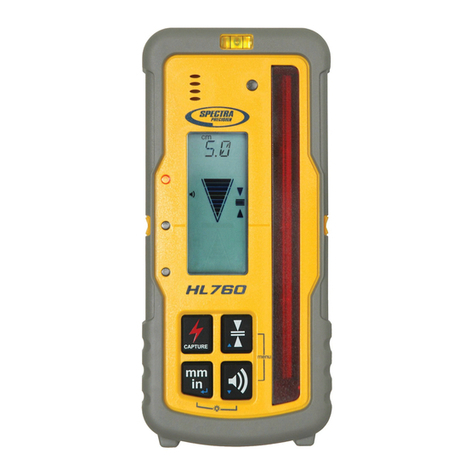
Spectra Precision
Spectra Precision HL760 User manual
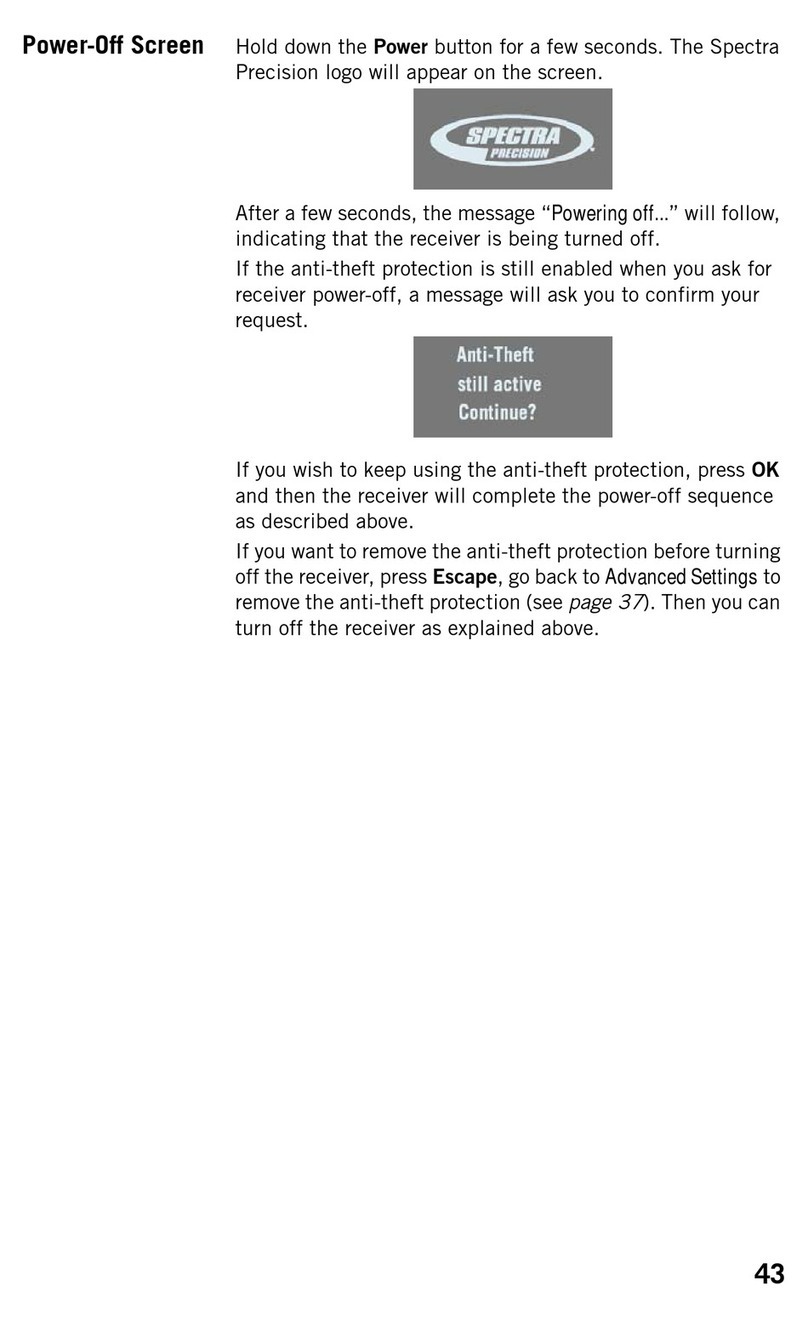
Spectra Precision
Spectra Precision SP90m User manual

Spectra Precision
Spectra Precision SP90m User manual
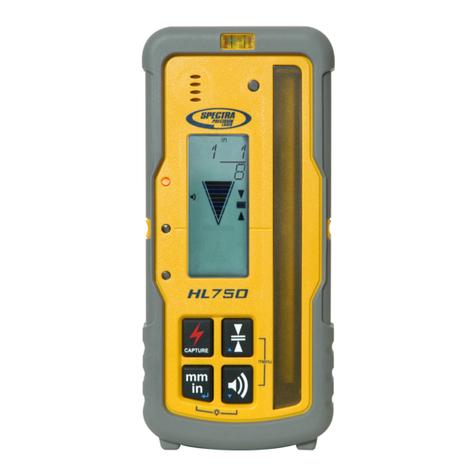
Spectra Precision
Spectra Precision HL750 User manual

Spectra Precision
Spectra Precision EPOCH 35 User manual
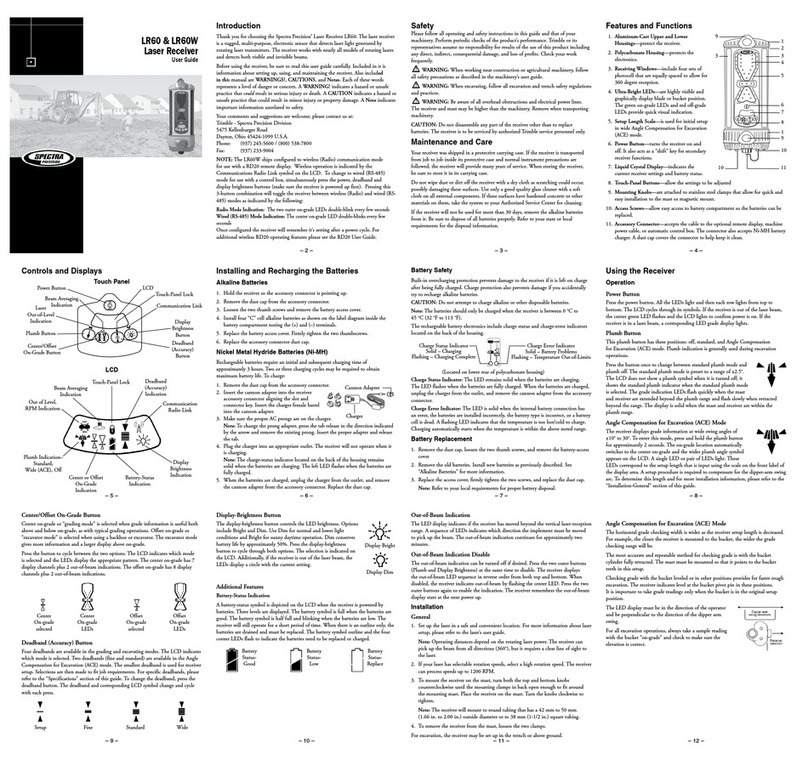
Spectra Precision
Spectra Precision LR60 User manual
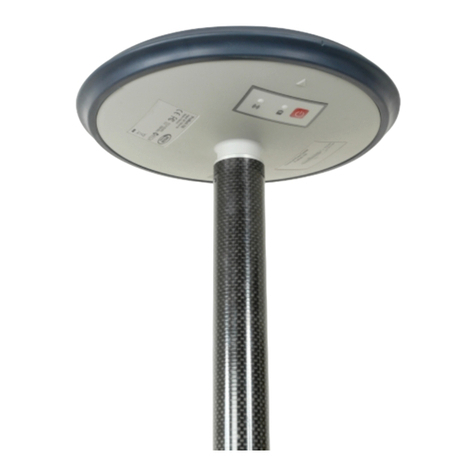
Spectra Precision
Spectra Precision ProMark 700 User manual
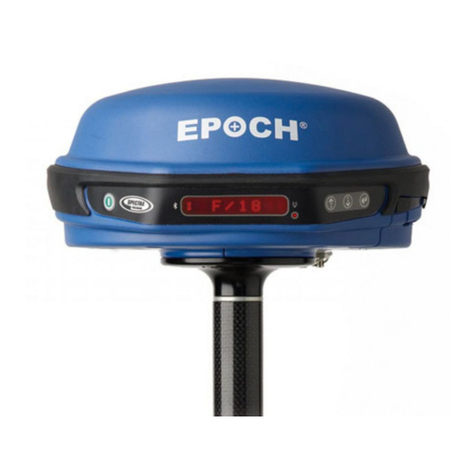
Spectra Precision
Spectra Precision EPOCH 50 User manual

Spectra Precision
Spectra Precision SP60 GNSS User manual
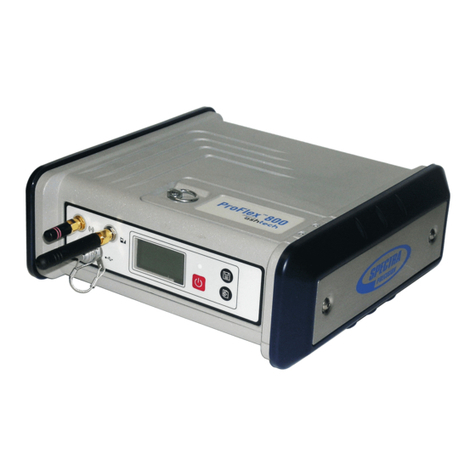
Spectra Precision
Spectra Precision ashtech ProFlex 800 CORS User manual
